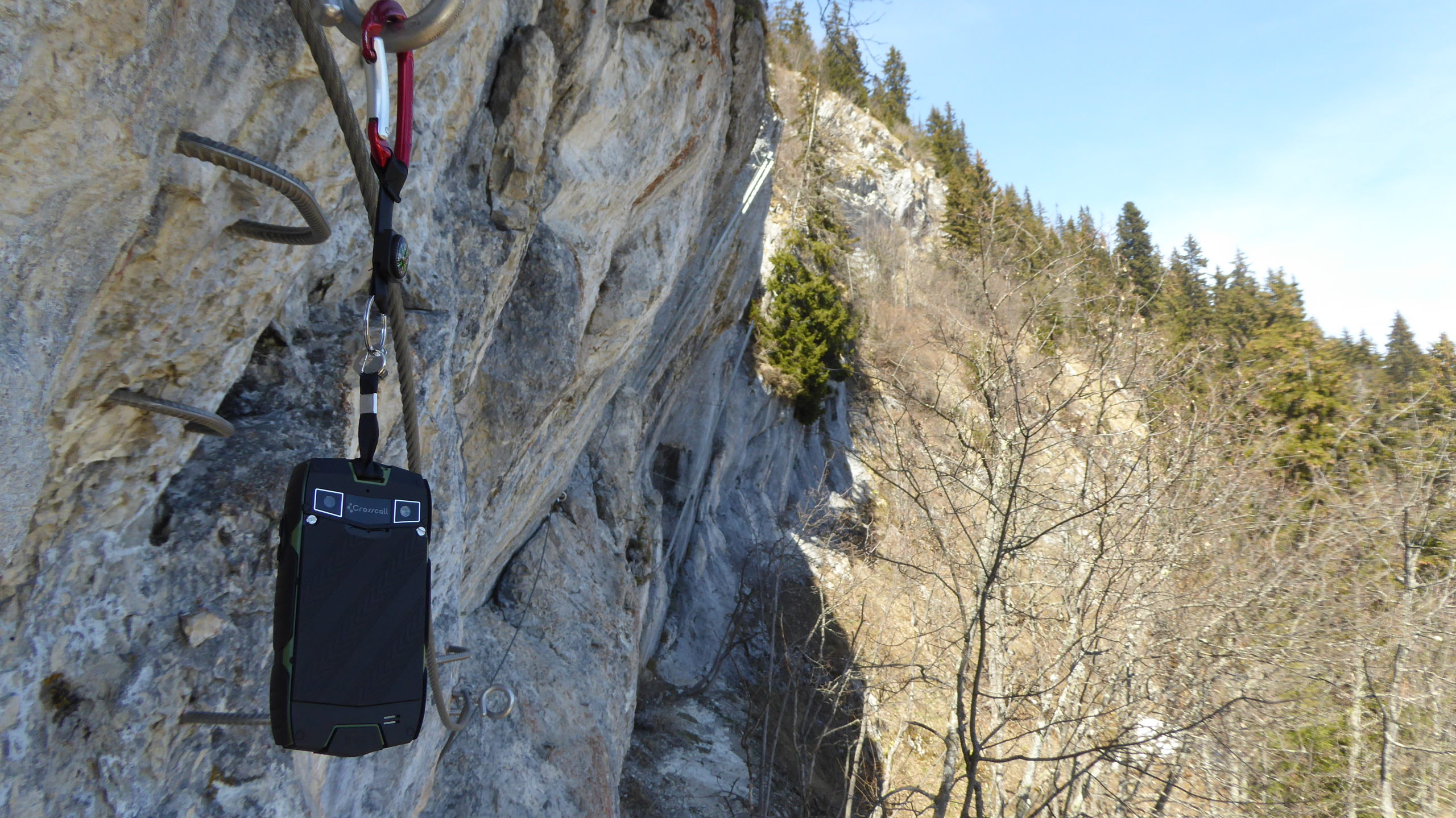The Leukerbad Via Ferrata
The Leukerbad Via Ferrata is a mythical Via Ferrata for those who practice the sport in the french speaking part of Switzerland. It is mythical both for the duration and for the vertical movement. The climb itself takes around 5hr30-6hr and the vertical change is 1000m. Via ferrata is rock climbing for tourists. A team of specialists look at a climbing route and then install a safety cable, spikes and other features to help people climb the via ferrata. The cable is static.
Via ferrata have a number of origins. Some via ferrata routes are along old smuggling routes, others were used by the French resistance as hide aways and others were used to get troops from one side of the mountain to the other during the first world war. In the 1960s to 1970s they were reinstated to attract tourists.
Leukerbad is a spa town with a collection of baths heated by geothermal activity. This year I chose to stay at the Alfa hotel and the price included access to a covered parking, access to the spa and access to the lifts. When you see that the lift is 34CHF and the Spa is around the same price the saving is interesting. As the town is small I parked the car when I arrived and did not use it until I left.
People like to catch the first cable car up and try to make it down before the last cable car down. Walking down to town is possible but most people are knackered after the via ferrata.
The Via Ferrata has three main parts. The first part takes you from the base of the Via Ferrata, by the big Swiss flag and up to a terrasse where grass grows and people have snacks. If you are not used to spikes then this route will surprise you as much as it did me. I would recommend finding a shorter Via Ferrata (VF) with spikes before doing Leukerbad.
The second part can be tackled one of two ways. The first way is to climb up as a climber, using foot holds and hand holds wherever you can find them. For those with less experience pulling yourself up with the cable is possible. If you use the cable then do not make the mistake I made my previous three times. If you are not afraid of heights then pull on the cable perpendicular to the cliff. It’s easier. This requires that you are not bothered with heights. The route has been changed. It used to be a more direct and upwards path. Now the path zigzags until you get to the cave.
Half way up the path to the cave a new VF variant is being added which takes you to the right and upwards towards a nepalese bridge before rejoining with the main route. The cave is interesting. It gets darker but you do not need a torch. In the cave you have two variants, easy, and hard. The easy route is along spikes and you climb up a ladder. The hard route has standard hand holds, a wooden bridge and then crosses over to the main route.
Where the two paths intersect you exit the cave and go up a chimney. The Chimney is relatively easy and you can rest against the wall. It then traverses right and you go upwards. As there are few hand holds and footholds you can either rely on climbing experience and climb using the rock or you can use the cable as I described in a previous paragraph. There is eventually a small plateau where you can have a quick snack, a drink and restore your energy. You still have a few more minutes of climbing until a real plateau. From this plateau you can enjoy the view.
This is the point by which I was usually exhausted. For the first time doing this via ferrata I was smiling at this point. Usually I’m exhausted and can’t wait for it to be over.
The passage through the cave you do on foot is nice but I have never had the courage to go over the edge and climb up. I take the footpath across the scree field to where the two paths intersect again. From here you have another half an hour of climbing to a slightly overhanging ladder. When a VF friend got to the top of the ladder and saw over the crest she said “Wow” because that view is so spectacular. The source of the “Wow” is a large circus with two glaciers. This year the glaciers had a lot of snow and you could clearly see the curves which illustrate glaciers in action.
If you take the Alfa hotel then your entrance to the spa is free. You will need to ask them for a card for the locker. The spa has a bath fed with warm volcanic water at 47 degrees and with larger cooler pools. Those pools are at about 36°c. You have the choice between bubbles or jets.
For food I ate pasta the first night. On the second night I had an entrecôte Sauce Café de Paris and it was delicious at the Pizzeria Giardino.
While I was capturing portals whilst playing Ingress I walked through the old town of Leukerbad and found these traditional buildings and implements.


